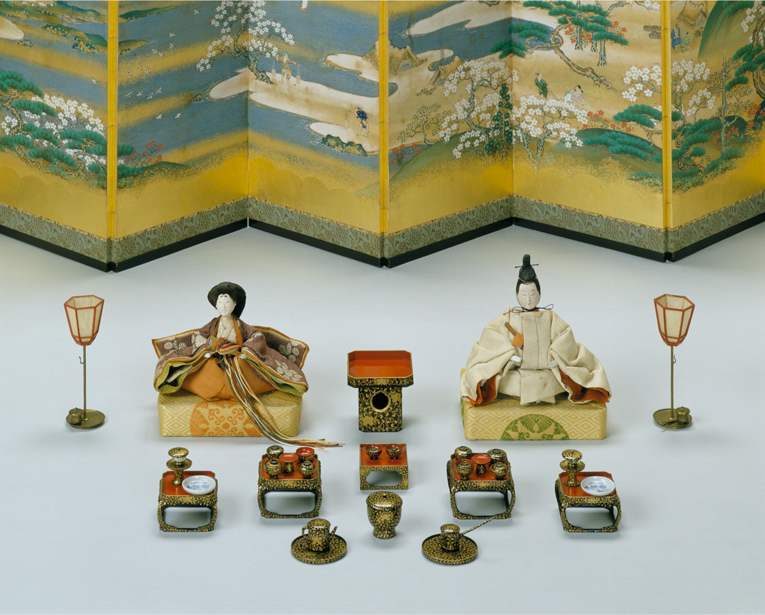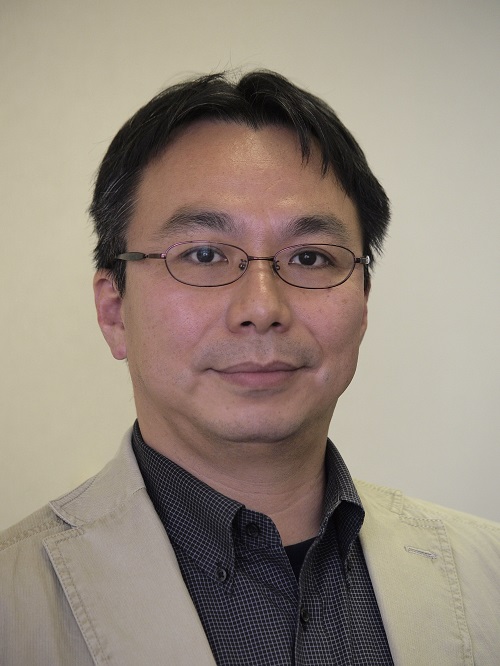Five things to know about Hina-Matsuri, the Doll Festival

In Japan, March 3 is known as Hina-Matsuri, the Doll Festival—a day when people celebrate the birth and pray for the healthy growth of their daughters. Its history as an annual event dates to the Edo period (1603-1867), when it began as a form of play for young girls of the nobility. In fact, it did not become common for ordinary households to put up these unique doll displays for their daughters on this date until after World War II. Hina dolls are not really toys for children to play with, but figurines that sit on a multi-tiered platform, attired in costumes modeled after the ancient Imperial Court.
In the postwar years, celebration of the Doll Festival and the display of hina dolls spread throughout the country. Today public-scale Doll Festivals have caught on as a popular tourist attraction in several parts of Japan, often developed for that purpose. We interviewed Shin’ya Yamada, Associate Professor of the Folklore and Folklife Division at the National Museum of Japanese History (Rekihaku), about the origins of the Doll Festival and how it has evolved over time.
Q: Where did the Doll Festival originate?
A: There are a number of theories about the origins of the Doll Festival, but they fall roughly into two categories. One theory is that it began as a cleansing ritual to wash away impure or inauspicious conditions. There is an ancient purification ceremony known as misogi-harae in which one breathes on a straw doll and casts it into a river to rid oneself of impurities.
The other theory is that the Doll Festival began as a kind of hiina-asobi, playing house with dolls (hiina, meaning “small doll,” changed over time to hina, the word used today). Offerings would be made to standing paper dolls propped against a wall. That form of play gradually spread from young children to older girls and women, eventually evolving from a game into a decorative display. It wasn’t until the late Edo period that people began decorating their homes with hina dolls as a special celebration on March 3, as we do today.
Q: Did Edo-era women all display hina dolls like that?
A: No. From the outset the Doll Festival was a pastime of the nobility, and the same was true during the Edo period. It began to enjoy broader popularity only in the Meiji (1868-1912) and Taisho (1912-1926) periods. With the growth of an urban middle class consisting largely of company employees, parents began spending more money on their children, and that included buying hina doll sets for their daughters. Whereas these sets had only been available for purchase at certain shops at a certain time of year, now department stores were selling them as well. People would also display scrolls with paintings of hina dolls or hina dolls made out of clay in place of the hina doll sets. After World War II, as the entire nation began to enjoy economic prosperity, the practice spread even to parts of Japan that had never had a tradition of displaying hina dolls, and mass production of the dolls took off.
Q: What happened after the Doll Festival grew popular throughout the country?
A: For many households, the doll displays took up too much space, or no one was interested in setting them up after the young girls in the family had grown up. That was when the festival began to be celebrated as an annual public event.
For example, the town of Katsuura in Tokushima Prefecture holds a Big Hina Dolls Festival every year (February 18 to April 8, 2019). Dolls no longer in use are donated for display on a pyramid-like stand eight meters high, with 100 tiers—25 tiers in each of the four directions. This event, which was launched in the 1980s, now attracts visitors from the surrounding region as part of a growing nationwide trend of holding seasonal festivals of this sort. In other words, hina dolls that would otherwise be discarded now enjoy new life as a tourist attraction.
Q: What other Doll Festival-related events are there around Japan?
A:The Katsuura Big Hina Dolls Festival takes place in the city of Katsuura in Chiba Prefecture (February 22 to March 3, 2019), which drew its inspiration from the festival held in the town by the same name in Tokushima. In this event some 30,000 hina dolls are displayed on the stone steps of shrines and other locations around the city. Since it’s not far from Tokyo, the festival attracts some 200,000 visitors and has become a major tourism asset. At another event, the Hina-Nagashi or “Doll Floating” at Awashima Shrine in the city of Wakayama, hina dolls are placed in boats and floated out to sea.
Q: We hear that there is a rare hina doll display at Rekihaku too. Can you tell us about it?
A: Rekihaku has in its collection a doll set and accessories once owned by Princess Kazunomiya, the eighth daughter of Emperor Ninko, who reigned from 1817 to 1846. However, we only display it every two years, and unfortunately it’s not on view this year.
Princess Kazunomiya’s doll set consists of a male and female doll in the yusoku-bina style, dressed in exact replicas of Heian-era (794-1185) court costumes. Dolls of this type were favored in Edo-era Kyoto, then the royal capital. The two dolls in this set wear exquisite reproductions of the finery worn by kugyo, nobles of the highest rank among those serving at the Imperial Court. The dolls are accompanied by some 80 accessories and ornaments that make this display particularly spectacular.
One item, for example, is a game of go complete with a set of tiny go stones less than 1 mm in diameter, about the size of sesame seeds. There is also a shogi (Japanese chess) game with similar-sized pieces. One of the pleasures of viewing this doll set is to get a look at these elaborate and meticulously rendered accessories.
What was originally a pastime for women and girls of the Edo-era nobility evolved in postwar Japan into an event celebrated by families from all walks of life. Today Doll Festivals even serve as a tourist draw. Though it’s tempting to think of the Hina-Matsuri as an ancient tradition that has survived intact over many centuries, a close look at its history reveals it to be a comparatively recent practice that has changed with the times.

Hina dolls and accessories formerly belonging to Princess Kazunomiya (collection of the National Museum of Japanese History, Edo Period H-40)

Hina doll accessories: Towel rack, mirror stand, comb stand, basin, tissue paper stand and four-handled basin, gargling basin and tooth-dyeing accessories (collection of the National Museum of Japanese History, Edo Period H-40)

Shin’ya Yamada, Associate Professor, Folklore and Folklife Division, National Museum of Japanese History.
He specializes in folklore and cultural anthropology with a particular interest in funeral rituals and the concept of death in Japan, as well as in the relationship of tourism to annual festivals and other traditional events. He studied law and sociology at Keio University and earned his Ph.D. in sociology at Keio.
(Interview by Ayumi Koso)
